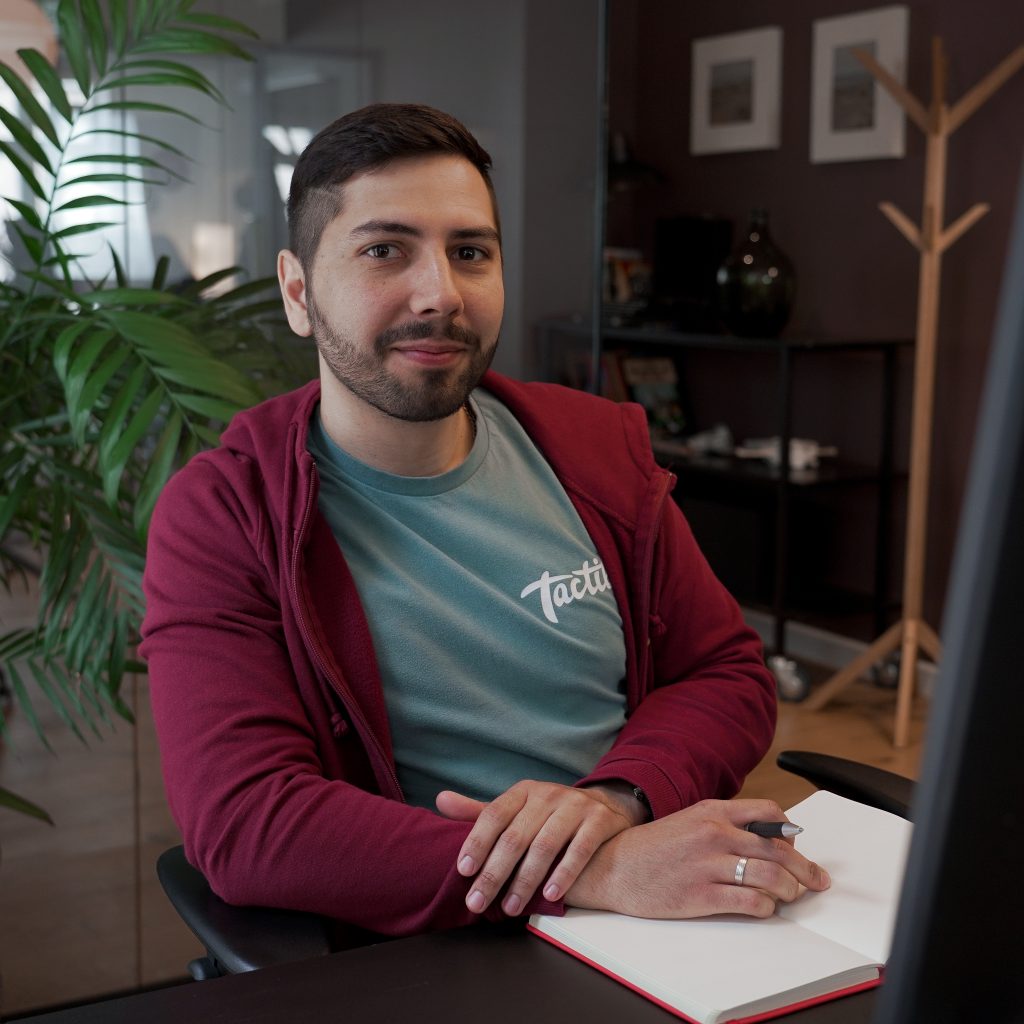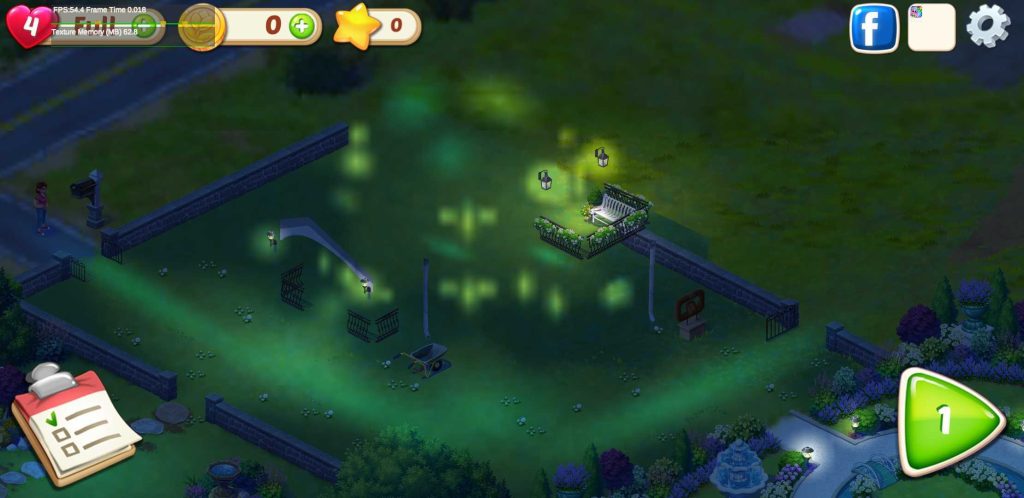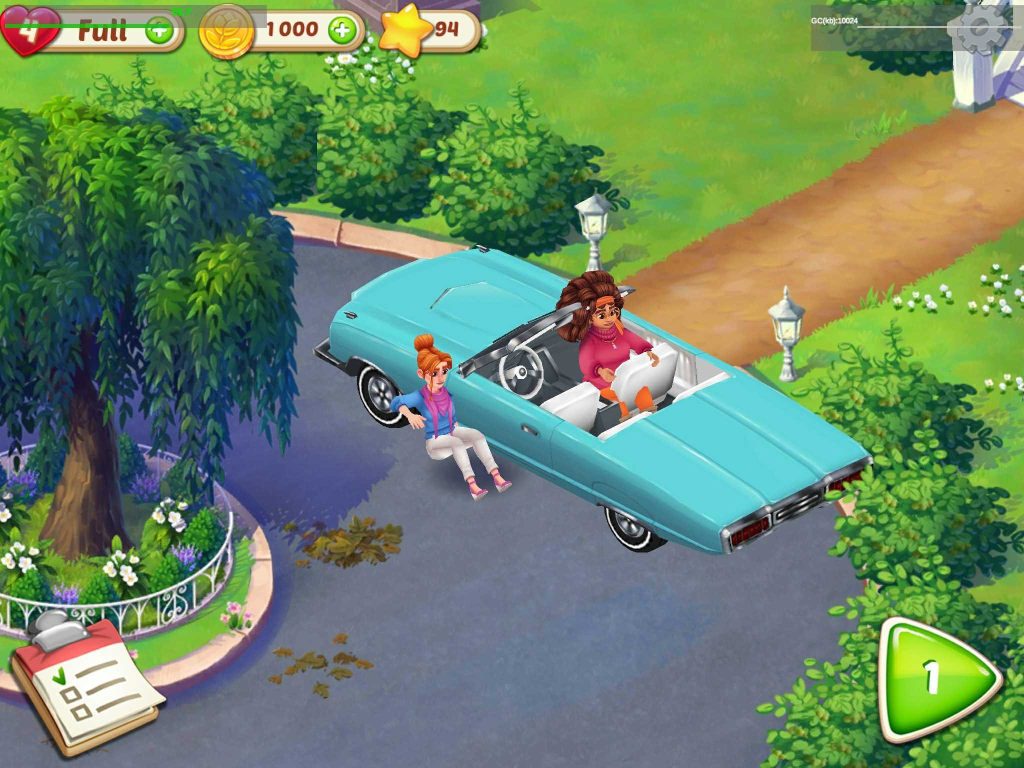Written by Murad Musakaev, Producer and Head of Studio in Cyprus

When it comes to the role of a Game Producer, that title can mean different things depending on the company: at some companies, it means “project manager”, in others “product specialist”, for some even “game designer”. Even inside Tactile, we define the role a bit differently depending on the project and team. But we agree on the core focus: building a robust production pipeline.
We all know the importance of innovation and creativity in games but the structured approach to production is equally vital. But what exactly does a game production pipeline look like?
I’ll take you behind the scenes of how we tackle things on a game like Penny & Flo, where my role as a producer revolves around three core pillars: level production, live-ops features, and story production (not every game in our portfolio has a big focus on narrative, but when it does, it’s a beast worth taming). Each of these pillars is crucial for creating games that engage players, grow and stay relevant in the dynamic field of free-to-play mobile gaming.
This article is a journey through our pipelines. Spoiler: it’s not only about concrete things like the right tools and accurate estimations but also about concepts like collaboration, transparent communication flow and flexibility of planning. Whether you’re in the industry or simply curious about how things work behind the scenes, this article will offer insights into the game production based on my experience at Tactile (which means it’s not a “one size fits all” guide 😉).
The First Pillar: Level Production
Unlike, i.e. stories, level production is at the heart of any game in our Tactile portfolio, no matter if it’s a match-3, line connector, bubble shooter or blast puzzle. Most of our games passed the 10,000 levels line and for some of them, like Lily’s Garden and Penny & Flo, the new releases happen each week (for LG it has been over 5 years of weekly releases with not a single week skipped, can you imagine that?).
Those levels keep the majority of players coming back for more, with decorations and stories taking 2nd and 3rd place as the core retention mechanics. And those levels also serve as a foundation for most of the live-ops features. But creating levels isn’t just about slapping a couple of new layouts together and calling it a day. It’s a continuous process that requires both creativity and a data-driven approach.
My job as a producer is to ensure the level design pipeline runs smoothly and aligns with both player expectations and business goals. This involves balancing creativity with efficiency, ensuring that the level designers have enough creative freedom while following the timeline. At Tactile, we use quantitative and qualitative analyses, prioritizing player feedback and data-driven insights to optimize the designs, mechanics and difficulty curves of our levels. This means that the levels we produce aren’t static, they evolve based on how our players interact with the game. In over 3 years that I spent in Tactile, my level design team reviewed the set of initial levels dozens of times, every time finding room for improvement.
Our level production pipeline is highly iterative. A typical cycle looks something like this:
- Concept: The level designers come up with ideas for new levels/mechanics. This phase is where creativity shines as designers experiment with new layouts, mechanics, board pieces.
- Prototype: Once the concept is approved by a stakeholder (usually by a product specialist but in some cases by producer) and the new piece is drawn, implemented in code and tested, designers move to the prototyping stage, where levels are created in the game engine but are still subject to changes.
- Test: At this stage, the levels undergo meticulous testing. Feedback is collected and necessary adjustments are made to ensure the levels are fun and well-balanced.
- Release: Once all changes are applied and the levels meet our quality standards, they’re released to the players. The team starts to monitor the performance.
- Iteration: Based on the analytics data, the levels are fine-tuned. This may involve changing the layout, adjusting the difficulty, redesigning a board piece or even scrapping it if it does not work well.
And this is without mentioning A/B tests, funnel adjustments and balancing a handful of metrics designed specifically for levels!
The levels are the be-all and end-all for games like Penny & Flo. Without engaging and well-designed levels, even the best game mechanics or storylines will struggle to keep players. One of the challenges here is to achieve smooth collaboration as there are quite a few teams involved in this process, sometimes across time zones: level designers, developers, QA, product specialists, data scientists, user research and player care managers. We’ve developed a robust communication flow, supported by tools like Jira, Confluence, Slack and our own internal dashboards, that allows these teams to work in sync.
And a pro tip: make sure that you have a shared understanding of your work glossary. In our case, we had so many definitions of the same concept (power pieces, boosters, bonuses, power ups, board pieces…), that we had to start a dedicated Confluence page where we align on how we call things. However, players don’t have that and keep referring to them in their own way 😆
The Second Pillar: Live-Ops Features
If levels are the heart of our game, live-ops features are the bloodstream that keeps players pumped and engaged. While a player might spend hours beating a difficult level and put the game away for the day, it is those time-limited tournaments and challenges that keep them engaged and coming back for the reward day after day. Our live-ops support has many forms: from seasonal events with limited time to participate to more routine things like daily challenges or leaderboards.
My role as a producer in the live-ops field is all about the balance. Working side to side with the product team, we ensure a consistent stream of fun, varied content that aligns with player expectations and market trends. These features, of course, should also serve the business purposes, keeping engagement, retention and LTV on the desired level, pushing it to new heights. And all this should hit the market in the right moment 🤪
To achieve all that, we follow an iterative cycle (do you see the emerging pattern here? 👀):
- Concept: Ideas for events and live-ops features often come from various teams: marketing, product, and even community feedback. Then the concept is assessed by the product team to see how it fits our games.
- Design & Prototype: Once a concept is approved, we work closely with game designers and developers to integrate the feature into the game. Whether it’s a family tournament, a limited-time event or a completely new game mode, each of them needs to be carefully balanced to ensure it’s both fun and achievable but challenging enough to keep the attention.
- Testing: For live-ops, this involves not just the tests of functionality, mechanics, rewards and difficulty, but also development of test cases and automations for future validations.
- Launch: After testing, the live-ops feature goes live. This is the critical stage where we closely monitor player feedback and metrics to ensure that the feature is hitting its goals – whether that’s engagement, retention, or revenue generation.
- Iteration: Live-ops rely heavily on data-driven decision-making. Every event or feature we roll out is analyzed in terms of player engagement, session length and revenue impact, and these insights go right back into the live-ops loop to inform future events.
One of the main challenges I already mentioned is timing. You can’t postpone New Year’s Eve or Halloween. Unlike levels, which can be developed at a steady pace, live-ops work is real-time. New events and features must be designed, tested, and launched in sync with specific dates, such as holidays or major game updates. A small hiccup can delay an entire event and lead to missed opportunities, not to mention unhappy players.
The Third Pillar: Story Production
When it comes to some of our games, particularly titles like Penny & Flo or Lily’s Garden, story production isn’t just a cherry on top. The stories we make keep players coming back for more, always wishing we can do more than one per week. But producing a captivating and engaging story that evolves over time is no walk in the park – it requires continuous collaboration between story director, writers, 2D and 3D character artists, animators, area artists and set-up specialists, cinematic artists, translators, QA, developers, and product and user research teams (imagine all the steps to this complex process!)
And just like with level design and live-ops, Tactile treats story production as an iterative process. It’s crucial to tailor a well-structured narrative but it also needs to be flexible enough to adapt to changes in player behavior, feedback, and market trends. For example, when we started a “Grand Thai Hotel” season of Penny & Flo, one of our main characters, Penny, was in the middle of a love triangle, so we analyzed player choices and behavior in some of the story tasks to pivot accordingly.
It’s a topic for a separate article but to put it short, we face these phases:
- Concept: The story director and writers brainstorm the overarching narrative, outlining key story plots, characters and their development that will happen in this season. This is not just about the story, but also about the setting, style of decorations, outfit design references and much, much more.
- Pre-production: Once the basic narrative structure is set, the director and writers develop individual story beats, while the art team starts to work on characters and area sketches in parallel. There are so many nitty-gritty details to it: aligning character animations with the story tone, matching dialogue pacing with gameplay flow as each story task requires a specific number of levels to be completed, making sure the visuals resonate emotionally with players… The list goes on.
- Implementation & Testing: The disciplines branch out and go deeper, and then come together again when cinematic artists will be piecing the story together in editor. The challenge here is to make sure that story sequences don’t break the player’s immersion, look interesting and fresh enough, but also don’t take unreasonable efforts to produce. For example, cutscenes should not be too long or intrusive, and dialogue pacing must feel natural, even when spread over several tasks. We call this dance of balance “cinematic excellence”.
- Player Feedback & Iteration: Just like with levels and live-ops, data plays a significant role in shaping our narrative decisions. We look at chapter ratings each week, analyze completion rates and decoration choices, sync with user support and UX teams. If a particular plot twist doesn’t resonate or feels like it’s slowing down progression, we adjust accordingly.
As a producer at Tactile, my role extends beyond just managing timelines and deliverables. It’s about making sure that these three pillars – level production, live-ops features and stories – work harmoniously and create the best possible experience for our players.
Whether it’s adjusting a level’s difficulty, tweaking a live event or modifying a story, game production is an agile and constantly evolving process. The magic happens when all three pillars align perfectly and “click”, but here’s the harsh truth: no matter how robust your pipelines are, challenges will arise as not everything is in your control. Whether it’s an unexpected bug, shifting market trends or the complexities of team communication, being adaptable is key (or one of the keys at least, as I wrote here).
As with anything in game production, it’s not about avoiding mistakes – it’s about learning from them, adapting quickly and keeping the data at the forefront of your decisions. And if you ever find yourself struggling to keep all these pillars balanced, just remember – even the most well-organized pipelines require an occasional adjustment 😉
Time for talent with Bea Storm
Hi, my name is Bea, and it’s a pleasure to meet you virtually!

I joined Tactile in 2019 as a QA Tester, initially working on Lily’s Garden shortly after its launch. I was thrilled to be one of the first people to experience new story days each week, and even after five years, I’m still captivated by the story—it always makes me smile when I play it.
Since then, my role has shifted to Automation Engineering. It’s been a long journey to reach my dream job in QA Automation, and I am incredibly grateful to have experienced that journey at Tactile. The path wasn’t always easy, but the support and opportunities I’ve had here have helped me grow both personally and professionally.
Before Tactile
… I worked as a nutritionist in my hometown in Transylvania. I completed my bachelor’s degree in Nutrition and Dietetics at a medical university. But, when I moved to Denmark, I found finding a job in my field challenging. This led me to rethink my career path and explore new opportunities.
Transitioning into the gaming industry was a big shift, but the core of my motivation remained the same: a desire to learn and tackle new and exciting challenges. While working as a nutritionist presented its own difficulties, especially when helping patients make life-changing dietary adjustments, I eventually found more satisfaction in solving problems through automation rather than addressing human health issues. Both roles, however, require careful analysis and problem-solving, and I’ve enjoyed the journey that led me to where I am today.
Joining Tactile
I started as a Story tester and moved into a functional testing role early in my career at Tactile, which required more in-depth test analysis methods. My curiosity and love for learning have always driven me to expand my knowledge. I began studying game development to understand how and where games could break and what areas needed the most testing.

This drive led me to work as an Area Setup Specialist for Penny & Flo, opening up an entirely new world. I discovered my passion for working with Unity and learning programming, which inspired me to apply for a Junior Automation Engineer role.

From Manual QA to Automation Engineering
The shift from manual QA to automation has been exciting, but challenging. Over time, I’ve gained a better understanding of our processes, making the move from manual testing to writing scripts and automating test cases easier.
My current role focuses on building strong collaboration between the manual and automation QA teams. We’ve set a goal to improve QA by working closely together and training the manual QA team on the automation tools we’ve created to enhance our testing process.
This teamwork improved the quality of overall testing, and I’m proud to have helped the manual team grow by showing them how to use these tools and improve their work. It’s been rewarding to be part of this change and help raise the quality at Tactile.
Having an impact
I’m part of a fast-paced, dynamic team that constantly pushes each other to improve. We regularly hold skill-sharing sessions, learning from one another’s work, which is a fantastic opportunity for me as a junior member to grow and gain new skills.

What I love most about Tactile is the flat structure. You really feel it. I’ve had moments where I came up with an idea, and I could go straight to leadership to share it. They listened and discussed it with me, which made me feel valued at every level of the company.
The keys to success
At the start of any career, staying motivated and curious is important—especially in Quality Assurance. Curiosity is key. I’ve always tried to look at my testing tasks from different angles, wondering how things could break or how I could gather more data. Working in the game industry, part of entertainment makes the process even more fun and rewarding. It’s great to be part of an environment where people are relaxed, fun, and passionate about their work.

At Tactile, we create games with genuine heart; that passion really shines through in everything we do.
Two weeks ago, 24 Tactilers (a mix of new and seasoned Tactilers from different teams and functions) headed out to a forest near Roskilde, Denmark for a day of team building. The goal? Strengthening relationships, building closer bonds, and boosting collaboration—all while having some fun in the great outdoors.
Our Head of Talent & Culture, Sarah, joined in on the adventure and shares a bit about the experience below!
Tactile: Sarah, what is your team’s approach to Learning & Development within Tactile?
Sarah: The Talent & Culture team at Tactile is not your traditional HR department. We focus on being agile in offering support and activities throughout the Tactiler journey (from onboarding to offboarding), embracing adaptive implementation rather than a “one size fits all” approach. While some activities are fixed to certain times of the year—like salary reviews and development talks—we generally don’t work on fixed projects. Instead, we prefer to stay flexible, choosing initiatives that make sense for Tactile’s current needs. Over the past year, we’ve been working on enhancing our Learning & Development offerings.
The traditional approach to Learning & Development wouldn’t really work here. We have a flat structure, operate in a lean way, and as for seniority job titles – well, those are more for LinkedIn profiles 🙂 So, we’ve had to think outside the box—and honestly, we don’t even believe in putting people in boxes.
Like many growing companies, we’ve brought in a lot of new people over the past few years. At the same time, we’re lucky to have a good number of long-term Tactilers. The challenge is that some of our more seasoned Tactilers aren’t always working closely with the newer ones, or even interacting with them on a regular basis, unless of course they are sat in the same team.
That got us thinking: our approach to Learning & Development shouldn’t be siloed. Instead of the typical route—grouping people by tenure, title, or team in workshops—we thought, why not mix it up?
Tactile: So, how did the idea of mixing people up in workshops evolve into an Outdoor Adventure?
Sarah: The idea came from wanting to create cohorts—groups of people with different tenures, functions, and backgrounds—who would go through various learning modules together. These modules are designed to cover the fundamental skills needed to succeed at Tactile, including both soft skills and technical abilities.
But we also wanted to break down barriers and create closer relationships between the group members. We figured the best way to do that was to give them an experience outside of work where they could push themselves, support each other, and, of course, socialize. That’s where the Outdoor Adventure came into play.
As with everything at Tactile, we wanted the team-building experience to be outside the box. We teamed up with Banff People to design an Outdoor Adventure that included a mission where teams had to solve both physical and mental challenges.
The adventure lasted a day and a half. It started with a workshop on team dynamics, followed by the mission itself. After a day full of challenges, we camped out in tents for the night. The next morning, we kicked things off with yoga in the field, followed by a debrief before heading home on a bus.
It was an amazing experience and another project I’m really proud of. Big thanks to Anna Diekelmann and the 22 awesome troopers who came along for the ride!
Tactile: What’s coming up next for the Troopers post this Outdoor adventure?
Sarah: Over the next months, this group of Troopers will continue to meet for more learning and development and of course, they will meet for more social events as well. By the time new Troopers are formed next year, these ‘veteran’ Troopers will be the ones sharing about their own experiences.
The purpose of all of this is to create a deeper bond between Tactilers from different teams, which will continue to break down silos and help to promote the culture of continuous learning and collaboration which we’re growing at Tactile.
Check out more snapshots from the Outdoor Adventure below!
